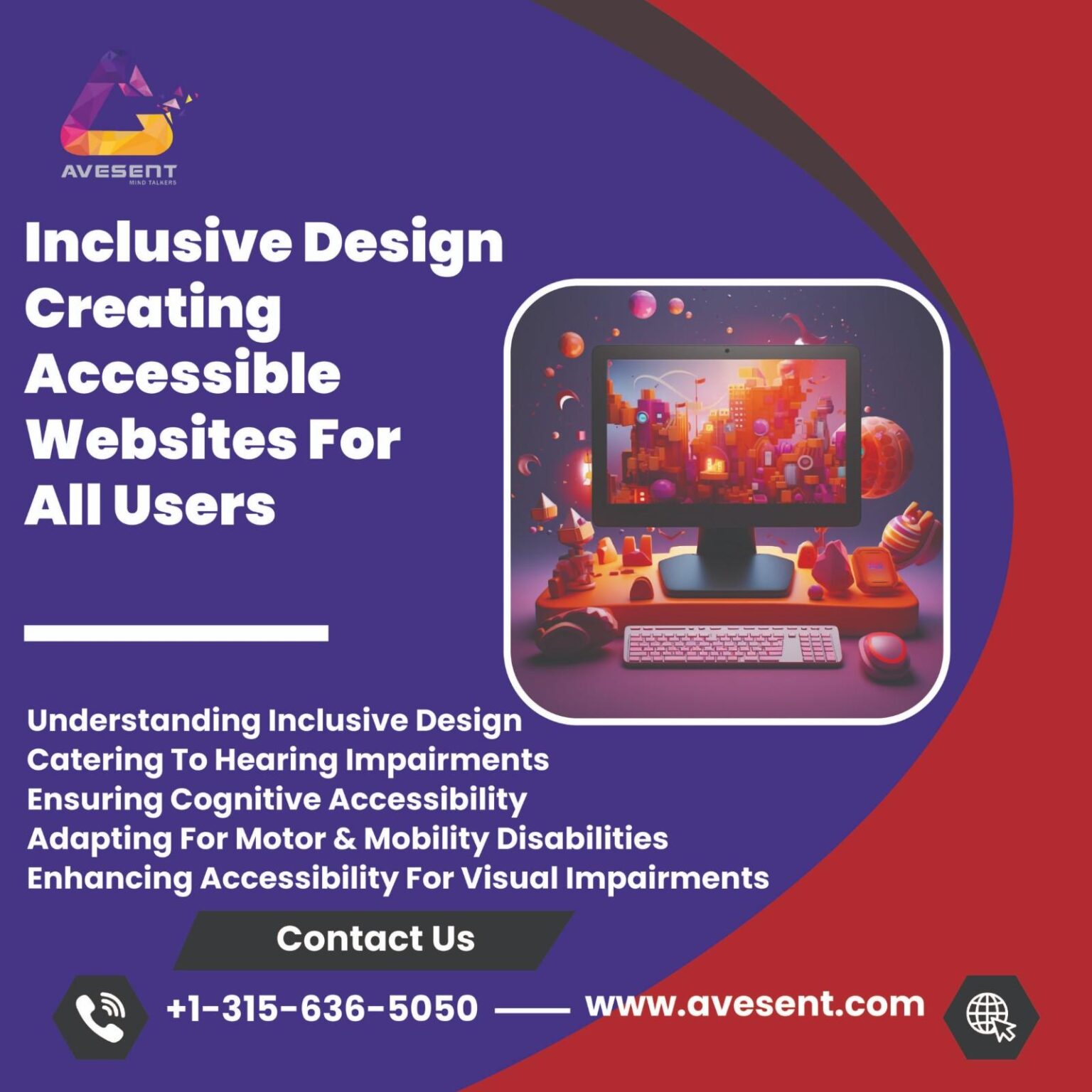Inclusive design is a fundamental aspect of modern web development that focuses on creating digital experiences accessible to all users, regardless of their abilities or disabilities. Ensuring websites are designed with accessibility in mind not only aligns with ethical considerations but also opens doors to a wider audience. Incorporating inclusive design principles into web development, especially in collaboration with pay-per-click management in Florida, fosters a more inclusive and user-friendly online environment.
Understanding Inclusive Design:
Inclusive design aims to create products, services, and experiences that can be accessed and used by individuals with diverse abilities, ensuring a seamless user experience for everyone. Web accessibility encompasses various factors, including visual, auditory, motor, and cognitive considerations.
Enhancing Accessibility for Visual Impairments:
Designing with accessibility in mind for users with visual impairments involves implementing features such as alt text for images, descriptive link text, and proper contrast ratios for improved readability. Collaboration with pay-per-click management involves ensuring visuals are accessible to screen readers and other assistive technologies.
Adapting for Motor and Mobility Disabilities:
Users with motor disabilities might navigate websites using keyboards or specialized devices. Implementing keyboard navigation, focus states, and allowing for sufficient interactive elements’ spacing aids in smoother navigation. Pay-per-click management strategies include optimizing website navigation for ease of use.
Catering to Hearing Impairments:
For users with hearing impairments, providing alternative text transcripts or closed captions for multimedia content ensures the information is accessible. Subtitles and transcripts enable users to consume content in various formats. Collaboration with pay-per-click management involves incorporating accessible multimedia content.
Ensuring Cognitive Accessibility:
Designing for cognitive accessibility involves creating clear and consistent layouts, avoiding complex navigation, and providing easy-to-understand content. Simplifying language and organizing content hierarchically aids users with cognitive disabilities. Pay-per-click management strategies involve simplifying website structures and content presentation.
User Testing and Feedback from Diverse Audiences:
Conducting user testing with diverse groups ensures websites are accessible and user-friendly for various demographics. Gathering feedback from individuals with disabilities helps identify and address accessibility issues. Collaboration with pay-per-click management involves gathering insights from diverse user groups for optimization.
Compliance with Accessibility Standards:
Adhering to established accessibility guidelines such as WCAG (Web Content Accessibility Guidelines) ensures websites meet recognized standards for accessibility. Compliance with these standards contributes to a more inclusive web environment. Pay-per-click management ensures websites meet required accessibility standards.
Accessible Forms and Interactivity:
Designing accessible forms with clear labels, error identification, and logical tabbing order benefits users with disabilities. Ensuring interactive elements are accessible via keyboard navigation and have visible focus states improves usability. Collaboration with pay-per-click management involves optimizing forms and interactive elements.
Responsive and Mobile-Friendly Design:
Mobile accessibility is integral. Creating responsive designs that adapt to various screen sizes and orientations benefits users with disabilities using mobile devices. Ensuring accessibility features are functional across devices is crucial. Pay-per-click management strategies include optimizing for mobile accessibility.
Continuous Improvement and Education:
Inclusive design is an ongoing process. Staying updated on accessibility best practices and evolving technologies ensures continuous improvement. Collaboration with pay-per-click management involves ongoing education and adaptation to accessibility standards.
Prioritizing inclusive design in website development is not only about meeting legal requirements but about embracing diversity and ensuring equal access to digital experiences for all users. Collaborating with pay-per-click management experts in Florida ensures websites are not just accessible but also contribute to a more inclusive online environment, fostering a positive user experience for everyone.




